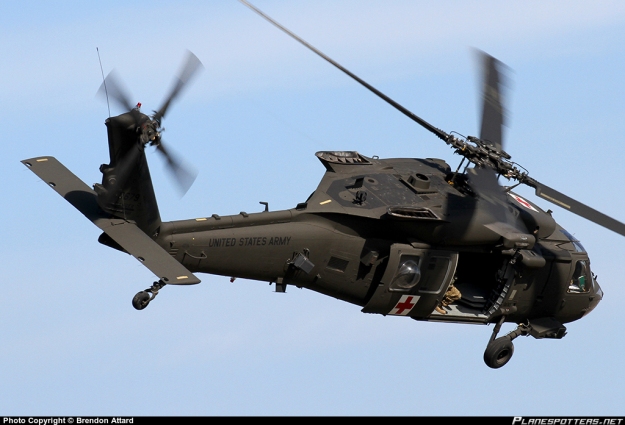Optimizing Safety And Security: Essential Maintenance Tips for Your UH 60 Helicopter
Optimizing Safety And Security: Essential Maintenance Tips for Your UH 60 Helicopter
Blog Article
Understanding the Mechanics and Engineering Behind Uh 60 Helicopters
The UH-60 helicopter, frequently understood as the Black Hawk, stands as a peak of modern rotorcraft modern technology, personifying a blend of robust engineering and detailed technicians. From its beginning to its existing models, the advancement of this airplane showcases a combination of development and practicality. As we peel back the layers of the UH-60's layout, a world of intricate systems and thorough engineering comes to light. Recognizing the technicians and engineering behind this functional aircraft unveils a realm where accuracy fulfills power, and where each component plays a vital function in accomplishing flight.
History of UH-60 Helicopters
The background of UH-60 helicopters traces back to the late 1970s when the USA Military sought a flexible and sophisticated energy helicopter to change its aging fleet. In feedback to this requirement, the Sikorsky Aircraft Firm developed the UH-60 Black Hawk helicopter. Introduced in 1979, the UH-60 quickly came to be a staple in army operations due to its remarkable capabilities.
The UH-60 was created to succeed in a selection of missions, including army transportation, medical discharge, digital warfare, and special procedures. Its ability to adapt to various functions made it a beneficial possession to the united state Army and various other military pressures around the globe
For many years, the UH-60 system has actually undertaken numerous upgrades and variations to enhance its efficiency and maintain speed with developing goal needs. These helicopters have seen considerable service in conflicts such as the Gulf Battle, Afghanistan, and Iraq, showcasing their integrity and adaptability in varied functional atmospheres. The UH-60's abundant history is a testimony to its enduring tradition as a leading energy helicopter.

Engine and Power Solutions
Making use of sophisticated propulsion innovation, UH-60 helicopters are outfitted with sophisticated engine and power systems to make certain optimal efficiency and reliability in a variety of operational situations. The UH-60, typically referred to as the Black Hawk, is powered by 2 General Electric T700-GE-701D engines, each efficient in supplying up to 1,940 shaft horse power. These turboshaft engines offer the required drive for the helicopter to perform its goals efficiently, consisting of troop transport, medical evacuation, and combat assistance.

Blades System and Aerodynamics
How do the rotor system and the rules of aerodynamics of UH-60 helicopters add to their functional effectiveness and flight capabilities? The blades system of the UH-60 helicopter plays an essential duty in supplying lift and propulsion. The UH-60 includes a four-bladed, fully expressed rotor system that enables high maneuverability and security throughout flight. This style enables the helicopter to perform a large range of goals, from transport and medical evacuation to battle operations.
The rules of aerodynamics likewise play a key role in the efficiency of UH-60 helicopters. The streamlined body and rotor blade design minimize drag, allowing the helicopter to achieve greater speeds and far better fuel efficiency. The aerodynamic design of the UH-60 likewise adds to its ability to run in diverse ecological problems, including high altitudes and warm temperature levels.
Avionics and Flight Control Systems

In its intricate coordination with the rotor system and the rules of aerodynamics of UH-60 helicopters, the avionics and trip control systems form a vital network of innovations forming the airplane's functional capabilities. In the UH-60, these systems consist of digital displays, communication radios, General practitioner navigation, weather radar, and auto-pilot systems.
The flight control systems of the UH-60 are accountable for equating the pilot's inputs into the appropriate adjustments to the blades system, ensuring stable trip and ability to move. These systems consist of hydraulic actuators, servos, and computers that interact to regulate the main and tail rotors, in addition to various other flight control surface areas. By precisely taking care of the helicopter's trip characteristics, these systems enable pilots to do a large range of missions, from transport and search-and-rescue to battle operations, with precision and self-confidence.
Duty and Applications in Air Travel
Avionics systems in UH-60 helicopters include a variety of electronic systems that aid in navigation, interaction, tracking, and regulating different airplane features. These systems include digital displays, autopilot systems, communication radios, GPS navigation devices, and climate radar. Furthermore, these systems incorporate safety and security features such as auto-pilot settings, terrain awareness warning systems, and security augmentation systems to boost the total safety and security and operational capacities of the UH-60 helicopters in various objectives, including army transport, medical emptying, check it out search and rescue, and airborne firefighting.
Final Thought
In verdict, the UH-60 helicopter is a functional airplane with an abundant background and advanced design. Its engine and power systems, rotor system, aerodynamics, avionics, and trip control systems all collaborate to make it a efficient and trustworthy maker. The UH-60's duty and applications in air travel are vast, ranging from military operations to search and rescue objectives. Its proceeded development and usage show its significance in redirected here the field of aeronautics (uh 60).
In its elaborate sychronisation with the blades system and aerodynamics of UH-60 helicopters, the avionics and flight control systems develop a crucial network of innovations shaping the airplane's functional abilities.The flight control systems of the UH-60 are accountable for translating the pilot's inputs right into the suitable modifications to the blades system, guaranteeing secure flight and ability to move. Avionics systems in UH-60 helicopters encompass a variety of electronic systems that aid in navigation, interaction, tracking, and regulating different aircraft features. Furthermore, these systems include safety and security functions check such as auto-pilot modes, surface understanding alerting systems, and stability augmentation systems to improve the general safety and operational abilities of the UH-60 helicopters in numerous missions, consisting of troop transportation, clinical emptying, search and rescue, and aerial firefighting.
Its engine and power systems, rotor system, aerodynamics, avionics, and flight control systems all function with each other to make it a reliable and reputable equipment.
Report this page